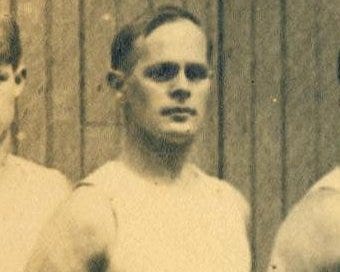On October 29, 1904, George Eyser did what no athlete had ever done and what no athlete has done since. He won six Olympic medals in one day.
The achievement in itself was remarkable. But George accomplished this feat in gymnastics after having one of his legs amputated below the knee.
While he would find great success in sports, George's life was full of sorrow and tragedy. Born in a small riverside town called Kiel in Germany in 1870, by the age of eight, both his mother and father had passed away. Foster families became home until the age of 14, when he and his sister boarded a ship for the U.S. to live with an aunt and uncle in a predominately German community outside Denver, Colorado.
Here, life stabilized some for George. He finished school, found a job, and joined a gymnastics club at seventeen. The sport was rapidly growing as German immigrants opened Turnvereinen (German for gymnastics club) in their new country. Americans knew these gyms as the Turners.
All seemed well for George. Then came the accident.
No one wrote much about it at the time. The records don’t say whether he was struck by a train or a carriage. Whatever it was, George's leg was amputated sometime around 1891. Just like that. Gone. George was barely in his twenties.
But by this time, America was already learning how to rebuild the human body. After the Civil War, with tens of thousands of maimed men returning home, a new industry had risen: prosthetics. Wooden legs with articulated joints, harnesses and hooks, devices that could bend or lock in place. They weren’t elegant, but they worked.
George got one of those legs. Wooden, heavy, stiff by today’s standards. Still, it helped him to walk again. And after about two years, he returned to the gym and began training.
In 1904, St. Louis hosted the Olympic Games. It was mixed with the World’s Fair. Organization was poor with many mishaps along the way. Some events dragged on for months. But George signed up. Aged thirty-four, with a wooden leg and a reputation for doing the impossible.
The gymnastics competition that year was unlike any before or since. It included not just traditional apparatuses but also running, long jump, and even rope climbing. George entered six events. And he didn’t just compete. He won them all.
George took gold in the parallel bars, gold in the long horse vault, and gold in the 25-foot rope climb. He won silver on the pommel horse and bronze in the horizontal bar and all-around competition. Six medals in a single day.
Outside of the sport, George worked as a bookkeeper and lived a modest life. He passed away in 1919 at the age of forty-eight.
Sources:
Abbott, Karen (updated by Ellen Wexler). “How the 1904 Marathon Became One of the Weirdest Olympic Events of All Time.” August 7, 2012 (updated June 27, 2024), Smithsonian Magazine, https://www.smithsonianmag.com/history/how-the-1904-marathon-became-one-of-the-weirdest-olympic-events-of-all-time-14910747/
“George Eyser: Medals, mystery and the Games’ first amputee.” Olympic Games, https://www.olympics.com/en/news/george-eyser-medals-mystery-and-the-games-first-amputee
Prager, Joshua. “A Forgotten Turner Classic.” The American Scholar, June 3, 2024, https://theamericanscholar.org/a-forgotten-turner-classic/
Wikimedia Commons, Wikimedia Foundation, https://commons.wikimedia.org/wiki/File:GeorgeEyser2.JPG





The indomitable human spirit fills the gaps in what success can be imagined!
Lovely story of fortitude.